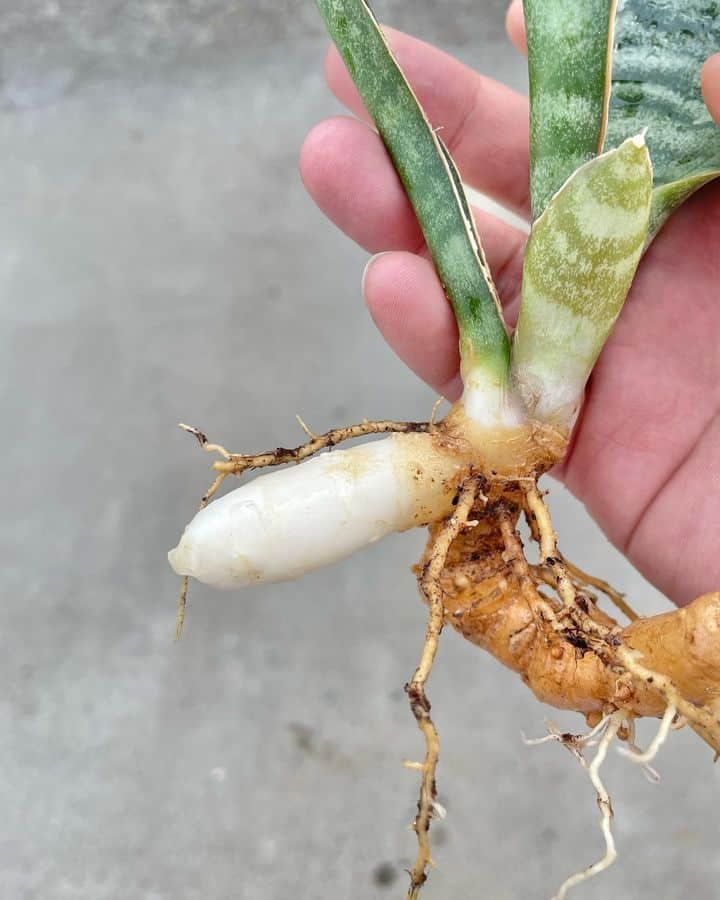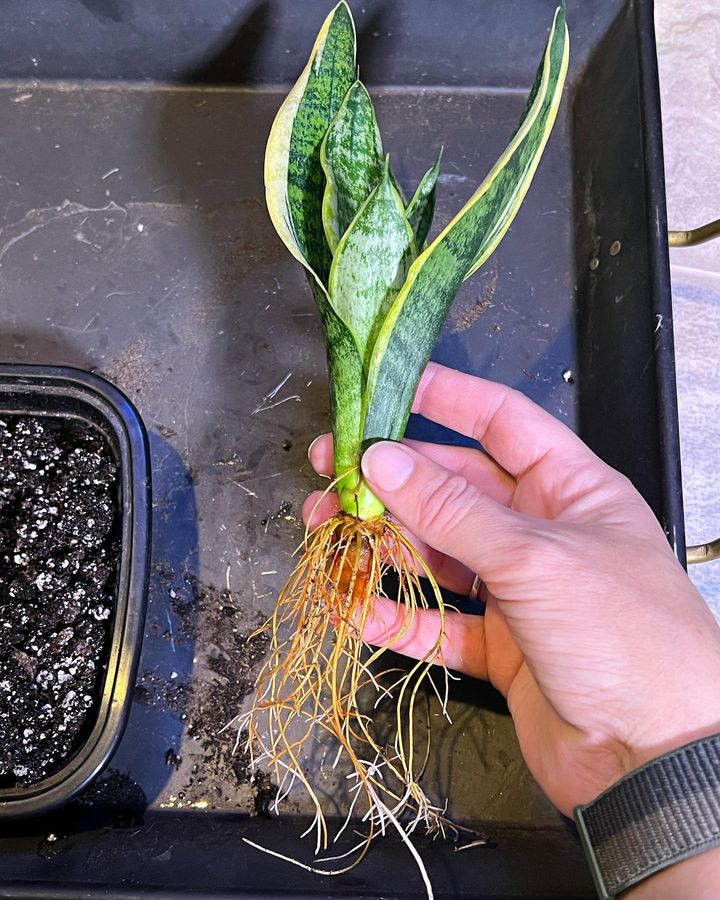Once you get obsessed with Snake Plant, there is no doubt you’ll want more of these sword-like air purifiers. Well, you can populate the Snake Plant by propagation.
Follow along to learn in detail about each propagation method and its advantages.
Table of Contents
When is the Best Time to Propagate Snake Plant?
Snake Plants, aka Sansevieria, are evergreen perennials actively growing from spring to summer.
Most essential care chores in Snake plants, like fertilizer application and pruning, are performed during the active period.
Root generation is vigorous during summers, and the cut ends readily develop roots, giving the plant a better chance of growth and establishment.
However, you can propagate Snake Plant throughout the year under suitable conditions.
Step-by-Step Guide to Propagate Snake Plant
Snake Plants like Sansevieria trifasciata and Dracaena masoniana are common varieties you can easily find in the market.
But varieties like Siam Silver are rare to find and pretty expensive as well. So, instead, you can propagate the plant to have as many of them as possible without much stress.
Generally, leaf-cutting, rhizomes, and offsets are used to propagate Snake Plant.
1. Propagating Snake Plant by Rhizome
Apart from roots, Snake Plant has a horizontal stem growing beneath the soil called rhizomes.
These rhizome store nutrients and water for the plant and helps the plant produce roots, offsets, and leaves.
Here is the step for the propagation of the Snake Plant by rhizome.
- Lift the Snake Plant out of its pot and look for thick, healthy rhizomes.
- Cut the selected rhizome so each section has an inch of rhizome length and some roots attached.

- Keep the sections dry for a day or two to allow callus formation in the cut ends. This prevents the rotting of the rhizome sections.
- Prepare a pot with a well-draining potting mix and bury the rhizome section horizontally.
- Water them thoroughly to keep the soil moist but not soggy. Make sure to drain the excess.
- Your Snake Plant might take 25 days to a month to see new shoots emerging from the rhizome.
Pro Tip: You may use cloning paste to stimulate the plant’s growth from a rhizome.
2. Propagating Snake Plant by Division
Snake plant produces offsets, which are smaller plants that grow from the base of the main plant. These offset keep growing and eventually overcrowd the pot.
Generally, you separate the plant and use these offsets individually to propagate a new Snake Plant.
Since the divided plant has a root system, it is easy to adjust in the new pot.
So, it is the fastest way to propagate a Snake plant with better results.
- Put down some paper and carefully remove the Snake plant from the pot.
- Brush off the dirt around the roots and look for clusters of leaves that can be divided into separated plants.

- Now, using a gardening shear, separate the plantlets, ensuring each division has its own set of roots.
- Plant the division individually in a pot with a well-draining potting mix with roots completely covered in the soil.
- Place the pot in a bright location that receives indirect sunlight and gently water it.
After the snake plant establishes the root in about 2-3 weeks, the new division will grow in height and width.
3. Propagation via Leaf-cutting
Leaf-cutting of Snake Plant root well both in water and potting medium. Also, the process for the method is quite similar.
Before beginning the process, gather a sharp knife, a glass jar or vase, and rooting hormones.
- Select a healthy Snake Plant and cut its mature leaf just above the soil.
- Cut the leaves into a few sections, each 2-3 inches long.
- Make an inverted V-shape cut at one end of all the sections. This provides more surface for root initiation.
- Let the cuttings dry for 2-3 days until callusing.
- Now take a glass jar filled with water and dip the callused end of the cutting into the water. Make sure not to submerge the entire leaf cuttings.
- Place the jar under indirect sunlight and allow the cutting to form roots.
- Keep changing the water once it looks cloudy every 2-3 days to prevent any fungal infection.
- The root initiation should be visible in about 40-50 days, after which you can transplant it.
Moreover, you can also plant the cutting directly into a potting mix or mediums like LECA balls.
Simply bury about an inch of the cutting into the soil with the V-side facing downward and moisten the base regularly.
You might have to wait a month or two for the root to initiate and develop.
The only downside of growing the cutting in soil medium is being unable to witness the growth of roots and shoots for a long period.
Needles to worry if you have followed proper steps and care routine.
Tips to Care for Snake Plant after Propagation
Snake plants and their cuttings may go dormant after being transplanted. It should not worry you as the plant will shortly revive upon suitable conditions.
You still have hope unless the leaves have all turned yellow, curled, and mushy.
So, your job as a plant parent doesn’t stop after propagation. Provide the Snake plant with some basic care to get a positive result.
- Place the propagated Snake Plant in an area receiving 8-10 hours of dappled sunlight to prevent excess light that could fade the variegation. Use a grow light to suffice the light requirement on dark days.
- Maintain the temperature around the plant within 60℉-85℉.
- Water the plant only after 1-2 inches of the top soil is dry to prevent overwatering and underwatering.
- Make sure to group your Snake Plant with another houseplant to maintain average humidity of 40-50% or get a humidifier for the same.
- Adding fertilizers to the propagated plant is not necessary, but a little dose of houseplant fertilizer or worm casting twice a year can enhance foliar growth.
- To provide an equal amount of light, rotate the pot every once in a while.
From Editorial Team
Conditional Pruning!
As long as you are happy with the height of your Snake plant, it doesn’t require pruning. You may trim the leaves if it has some diseases or yellowing.
If most of the portion is green, it may still be viable, so cut off the dying portions and replant them.
